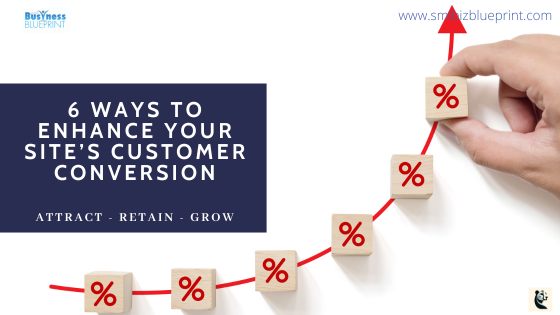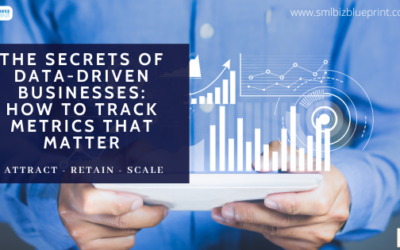Every business faces the puzzle of potential customers who browse and add items to their cart but then abandon their purchase.
Surprisingly, the average online shopping cart abandonment rate hovers around 70%, according to the Baymard Institute.
This statistic highlights a common challenge across industries and signals a significant opportunity for improvement.
In this blog post, we will dive into the reasons why customers aren’t converting, providing insights directly from non-converters.
We’ll explore key aspects such as customer behaviour analysis, checkout experience optimisation, and effective communication strategies that can transform browsers into buyers.
By understanding the barriers that prevent potential customers from completing their purchases, businesses can implement targeted solutions to enhance their conversion rates.

Join us as we unpack the intricacies of non-conversion and offer actionable strategies to help you effectively persuade your visitors to follow through on their buying intentions.
#1 Understanding Customer Behavior: The First Step to Increasing Conversions
To effectively tackle the issue of non-conversion, it’s crucial to start at the core: understanding customer behaviour.
Every visitor to your website has unique needs and expectations, and grasping these can significantly boost your conversion rates.
Here, we delve into how leveraging data to analyse customer behaviour patterns can illuminate the path to better engagement and, ultimately, higher conversions.
The Power of Data in Understanding Customer Journeys
One of the most effective ways to grasp why potential customers may be backing out is through detailed customer journey analysis.
Businesses can pinpoint where customers are dropping off by tracking every touchpoint a customer interacts with, from landing pages to product pages and checkout.
Tools like Google Analytics offer invaluable insights into these patterns, allowing you to observe common behaviours and anomalies in visitor actions.
For instance, if many users exit on the payment page, this could indicate issues with your checkout process or payment methods.
Segmenting Customer Behavior
Customer segmentation goes a step further by categorising visitors based on shared characteristics such as demographics, browsing devices, or even the time spent on the site.
This segmentation helps create more targeted marketing strategies that speak directly to the needs of different groups.
For example, suppose data shows that younger audiences are likelier to abandon carts. In that case, you might consider streamlining the mobile shopping experience or integrating more social media elements to keep them engaged.
Leveraging Feedback for Deeper Insights
While analytics provide a quantitative view of the situation, direct customer feedback offers just as critical qualitative insights.
Surveys, feedback forms, and even direct customer interviews can reveal why certain site elements are failing to meet visitors’ expectations.
For instance, a recurring theme in feedback could be that the site navigation is too complex or that product information is insufficient. Acting on this feedback can directly address the barriers keeping customers from converting.
Using Personas to Predict and Personalize
Creating detailed buyer personas based on both behavioural data and direct feedback can transform your approach to customer interactions.
These personas allow you to craft highly personalised experiences that resonate more effectively with potential buyers.
For instance, if one of your personas includes tech-savvy shoppers looking for the latest gadgets, you can tailor the user experience on your site to feature tech-related products more prominently and provide in-depth technical specifications that this group values.
Key Takeaway
Understanding customer behaviour isn’t just about collecting data; it’s about interpreting this information to make meaningful changes that reduce friction and enhance user satisfaction.
By thoroughly analysing customer journeys, segmenting audiences based on distinct behaviours, and integrating direct feedback into your strategy, you can uncover the reasons behind non-conversions and develop targeted interventions that turn browsers into buyers.
In the next section, we’ll explore how optimising the checkout experience can further enhance your conversion rates by removing barriers and streamlining the path to purchase.
#2 Optimizing the Checkout Experience: Strategies to Keep Your Cart Full
A seamless checkout process is pivotal in converting interested browsers into committed buyers.
Often, potential customers abandon their carts due to a checkout experience that doesn’t align with their expectations or needs.
Businesses can significantly decrease abandonment rates and increase conversions by addressing common pain points and optimising the checkout flow.
Identifying Friction Points
The first step in optimising the checkout process is to identify where customers are experiencing difficulties. High abandonment rates at specific checkout stages can indicate underlying issues.
For instance, a sudden drop-off after customers view shipping costs suggests that your shipping fees or delivery times may not be competitive or clear enough.
Tools like session replay software can visualize the user’s experience and highlight areas where customers hesitate or abandon the process.
Simplifying the Checkout Process
A complex or lengthy checkout process can deter potential buyers. Streamlining this process involves several strategies:
- Minimise the number of steps: Keep the checkout process as short as possible. For example, consolidate user information fields and billing details onto a single page.
- Guest checkout option: Allow customers to make purchases without creating an account. This can speed up the process and reduce barriers for first-time buyers.
- Clear and upfront information: Provide all necessary information, including all costs and tax calculations, before the customer begins the checkout process. Surprises at the final step can lead to cart abandonment.
Enhancing Mobile Checkout Experience
With a significant portion of ecommerce traffic coming from mobile devices, optimising the mobile checkout experience is crucial.
This includes:
- Responsive design: Ensure that your checkout process is fully responsive, adjusting seamlessly to different screen sizes.
- Autofill capabilities: Incorporate form autofill that helps users input their information quickly and accurately.
- Payment options: Consider including mobile-friendly payment options like Apple Pay, Google Wallet, or PayPal, which can further simplify the checkout process.
Building Trust Throughout the Checkout
Trust is a critical component in the customer’s decision to complete a purchase.
Enhancing trust can be achieved through:
- Security badges and SSL certificates: Display security badges prominently and ensure your site uses SSL encryption to secure user data.
- Transparent return policies and customer service info: Make return policies and contact information for customer service easily accessible throughout the checkout process.
Key Takeaway
Optimising the checkout experience requires a focus on simplicity, transparency, and trust. By identifying and mitigating friction points, simplifying the checkout process, enhancing the mobile experience, and building trust, you can create a smoother path to purchase that encourages more users to complete their transactions.
The next section will explore how leveraging e-commerce analytics can provide deeper insights into non-converter behaviours and help refine your strategies to boost conversion rates.

#3 Leveraging Analytics for Ecommerce Success: What Your Data Says About Non-Converters
Effective use of ecommerce analytics is essential for diagnosing and solving conversion issues.
By thoroughly analysing the data collected from your online store, you can uncover hidden insights about why potential customers are not completing their purchases.
This section explores how to use analytics tools to your advantage, ensuring that every piece of data helps you make informed decisions to enhance your conversion rates.
Tracking and Analyzing Customer Behavior
First, you must ensure that your analytics tools are properly set up to capture all relevant data.
Google Analytics, for example, offers comprehensive tracking capabilities that can monitor every visitor’s journey through your site.
Key metrics to focus on include:
- Bounce rates: High bounce rates on product pages can indicate that visitors are not finding what they expected.
- Exit pages: Identifying common exit pages helps pinpoint where customers drop off.
- Conversion funnels: Set up conversion funnels in your analytics software to see where your customers start to drop out in the buying process.
Understanding the Impact of Page Performance
Page performance can directly affect customer satisfaction and conversion rates.
Analytics tools can help you monitor page load times and identify pages that may be causing delays. Research shows that a one-second delay in page response can result in a 7% reduction in conversions.
Optimising these pages for faster load times can help keep potential customers engaged longer.
Utilising Heatmaps and Session Recordings
Heatmaps and session recordings visually represent how users interact with your site. Heatmaps show where customers click, how far they scroll, and what parts of your site receive the most attention.
Session recordings can playback the user’s journey, providing insight into user behaviour that traditional analytics might miss.
These tools are particularly useful for understanding:
User navigation patterns: Are users finding what they need easily?
Engagement with on-page elements: Are calls to action or key information being ignored?
Segmentation for Targeted Insights
Segment your data to compare how different groups of visitors behave on your site.
This could include segmenting by:
- Traffic source: Understand how the behaviour of social media users differs from those of organic search users.
- Device type: Mobile users might have different needs and behaviours than desktop users.
- Geographic location: Content localisation might be necessary if certain regions show higher bounce rates.
Acting on Analytics Insights
With these analytics at your disposal, you can start to make targeted changes to your ecommerce site.
For example, if heatmaps show that users are frequently missing your main call to action, you might test a more prominent placement or different wording.
If session recordings show confusion at certain navigation points, you might simplify your menu or add informational tooltips.
Key Takeaway
By leveraging the power of ecommerce analytics, you can understand why non-converters are leaving your site and what changes can be made to improve their experience.
Implementing these data-driven strategies will help you convert more visitors and enhance the overall effectiveness of your ecommerce operations.
Next, we will explore the role of pricing and user experience in influencing customer decisions, offering practical tips for aligning your offerings with market expectations to maximise conversions.
#4 The Role of Pricing and User Experience in Customer Decision-Making
Pricing strategy and user experience (UX) are pivotal in influencing whether customers decide to convert or abandon their journey.
These elements affect perceived value and play a crucial role in meeting customer expectations.
This section will explore how strategic pricing and optimized UX can significantly enhance your conversion rates by aligning more closely with your customers’ needs.
Evaluating Competitive Pricing
Understanding the competitive landscape is vital for setting prices that attract and convert.
It’s not just about being the lowest; it’s about being perceived as offering the best value.
- Market comparison: Regularly check your competitors’ pricing and promotions. If your prices are higher, justify this through clear, visible value additions such as better quality, superior service, or exclusive features.
- Price sensitivity: Use tools like A/B testing to gauge your customers’ sensitivity to pricing changes. Small adjustments can sometimes lead to significant improvements in conversion rates.
Transparency in Pricing
One of the major reasons for cart abandonment is encountering unexpected costs during the checkout process.
Transparency is key:
- No hidden fees: Ensure all costs are upfront. Unexpected charges for shipping, taxes, or add-ons can deter customers at the final purchase stage.
- Clear value propositions: Articulate why your product is worth the price. Detailed product descriptions, high-quality images, and customer reviews can justify the cost.
Optimising User Experience for Conversion
An intuitive and enjoyable user experience can significantly reduce barriers to conversion.
- Simplicity is key: A clean, uncluttered website design with a clear navigational structure ensures users find what they need without frustration.
- Responsive design: Ensure your site is optimised for all devices, particularly mobiles, as a significant portion of online shopping is done via smartphones.
- Loading times: Enhance site speed, as delays can quickly lead to loss of interest. Optimise images and streamline code to improve page load times.
Utilising UX Feedback to Drive Improvements
- Continuously gather and analyse customer feedback specific to usability to refine your UX.
- User testing sessions: Conduct regular sessions where real users interact with your site while you observe. This can provide direct insights into potential pain points.
- Surveys and feedback forms: Post-purchase surveys can reveal whether the buying experience met the customer’s expectations.
Key Takeaway
Integrating competitive pricing and superior user experience forms a powerful strategy for enhancing customer satisfaction and increasing conversion rates.
By focusing on these aspects, you can create a more compelling and customer-friendly shopping environment that attracts and retains customers.
Next, we will examine how crafting effective calls to action can directly influence customer behaviour and drive conversions, turning passive browsers into active buyers.

#5 Effective Calls to Action: Crafting Messages That Convert
A well-crafted call to action (CTA) is pivotal in converting visitors into customers. It guides users towards taking the desired action, whether purchasing, signing up for a newsletter, or downloading a resource.
This section discusses how to create CTAs that capture attention and motivate users to take action, ultimately driving up conversion rates.
Understanding the Importance of Clear CTAs
The clarity and prominence of your call to action can significantly affect conversion rates.
A CTA should be:
- Visibly distinct: Ensure that your CTA buttons stand out with contrasting colours from the rest of the page. The placement should also be strategic, appearing at natural decision-making points in the user journey.
- Verbally compelling: Use action-oriented, persuasive language that incites enthusiasm and a sense of urgency. Phrases like “Buy Now and Save!” or “Limited Offer – Sign Up Today!” can increase the effectiveness of your CTAs.
Personalising CTAs to Increase Relevance
Personalisation can significantly enhance the effectiveness of your CTAs by making them more relevant to the individual user.
- Behaviour-based triggers: Use data from user behaviour to present CTAs that align with their interactions on your site. For instance, if a user has been browsing kitchen tools, your CTA could be “Complete Your Chef Collection Today!”
- Segmentation tactics: Tailor CTAs based on demographic data, such as location or browsing device, to make them more applicable. For example, offering special promotions for first-time visitors can be a great way to convert new users.
Testing and Optimizing Your CTAs
Continuous testing and optimisation is the only way to know what works best truly.
- A/B testing: Regularly test different versions of your CTAs to see which one performs better. Experiment with different phrases, colours, and placements to find the most effective combination.
- Analytics monitoring: Keep an eye on metrics such as click-through rates and conversion rates to measure the success of your CTAs. This data will help you understand which strategies are working and which need adjustment.
Leveraging Urgency and Scarcity
Creating a sense of urgency and scarcity can compel users to act immediately rather than delay their decision.
- Time-sensitive offers: Use countdown timers for limited-time offers to instil a sense of urgency.
- Limited availability alerts: Inform customers of low stocks to encourage quicker decision-making. Noting that “Only 5 left in stock!” can hasten a purchase decision.
Incorporating CTAs into User Journeys
Consider your CTAs as standalone elements and integral parts of the user journey.
- Multiple CTAs: Employ different CTAs at various points in the user journey to gradually guide users towards conversion. For example, an early-stage user might see a CTA to “Learn More,” while someone deeper in the funnel might encounter a “Buy Now” button.
- Contextual relevance: Ensure that each CTA is relevant to the content around it. For example, a CTA related to product features might appear on a product detail page, while a CTA for downloading a buying guide could be placed on an informational blog post.
Key Takeaway
Crafting effective calls to action is an art that combines psychology, design, and testing.
By focusing on clarity, personalisation, urgency, and strategic placement, you can create CTAs that draw attention and drive users to take desired actions, significantly boosting your conversion rates.
In the next section, we’ll explore how integrating tools and technologies can enhance your conversion rates by addressing common barriers and optimising the overall user experience.
#6 Tools and Technologies to Enhance Conversion Rates
In the digital age, having the right tools and technologies at your disposal can significantly improve your ability to convert visitors into customers.
This section explores various tools that can help streamline processes, enhance user engagement, and remove barriers to conversion, making your digital platform more effective and efficient.
Utilising Conversion Rate Optimization (CRO) Tools
CRO tools are designed to analyse and optimise user interactions to increase the percentage of visitors who convert into customers.
These tools provide valuable insights that can guide your optimisation efforts:
- Heatmaps and click tracking: Tools like Hotjar or Crazy Egg visually represent where users click most frequently and how they scroll through your pages, helping you understand what captures their attention.
- A/B testing platforms: Services like Optimizely or VWO allow you to test different website versions to see which elements perform best, from different CTA buttons to varied content layouts.
Implementing Customer Relationship Management (CRM) Systems
A robust CRM system can track all interactions with potential and current customers, providing a wealth of data to personalise experiences and improve conversion rates.
- Data integration: CRM systems can integrate data from various touchpoints, providing a comprehensive view of customer behaviour and preferences.
- Automated workflows: Automate follow-up emails, personalised offers, and other communications based on customer actions to increase engagement and likelihood of conversion.
Enhancing User Experience with AI and Machine Learning
Artificial intelligence and machine learning are increasingly being used to automate decision-making and offer personalised experiences:
- Chatbots and virtual assistants: These can guide users through the buying process, answer questions in real-time, and provide personalised recommendations, mimicking a high-quality customer service experience.
- Predictive analytics: AI can predict user behaviour based on past interactions, allowing for tailored marketing strategies and proactive adjustments to the user experience.
Optimising Mobile Experience
Since a significant portion of web traffic comes from mobile devices, optimising the mobile user experience is crucial for maximising conversions:
- Mobile-responsive design: Ensure that your website is fully responsive or offers a dedicated mobile version to provide a seamless browsing experience on smartphones and tablets.
- Accelerated Mobile Pages (AMP): Implement AMP for faster loading times on mobile devices to reduce bounce rates and improve user engagement.
Security Enhancements to Build Trust
Trust is a critical component of the conversion process, especially in online transactions:
- SSL certificates: Secure your site with SSL to encrypt data and protect user information, which helps build trust with your visitors.
- Trust badges: Display security badges and endorsements prominently to reassure users that your site is safe and reliable.
Key Takeaway
Investing in the right tools and technologies can transform your website from a simple digital brochure into a powerful conversion engine.
Enhancing the user experience through personalized interactions, streamlined processes, and robust security measures can increase conversion rates and build lasting customer relationships.
In conclusion, understanding the technologies and strategies that can aid in conversion optimisation is crucial for any business looking to improve its online presence and sales performance.
Each tool and technology introduced here should be considered as part of a holistic approach to digital marketing and customer engagement.
Conclusion
Throughout this post, we’ve explored the multifaceted reasons behind customer drop-offs and discussed targeted strategies to enhance conversion rates.
Each section of this guide has provided actionable insights to address specific barriers that prevent potential customers from completing their purchases.
Recap of Key Strategies
- Understanding Customer Behavior: We started by emphasising the importance of understanding your customer’s journey through data analysis and feedback, which is fundamental in identifying where and why customers disengage.
- Optimising the Checkout Experience: We highlighted the necessity of streamlining the checkout process, making it as simple and transparent as possible to minimise friction that could lead to cart abandonment.
- Leveraging Analytics: Analytics tools were discussed to track user behaviour and page performance, helping pinpoint exact drop-off points and providing insights for potential improvements.
- Pricing and User Experience: We examined how competitive pricing and an optimised user experience could significantly influence a customer’s decision to convert, stressing the importance of clarity and ease of use.
- Effective Calls to Action: Crafting compelling and personalised calls to action was identified as critical in guiding users towards conversion, utilising urgency and relevance to motivate action.
- Using Tools and Technologies: Finally, adopting advanced tools and technologies such as CRO tools, CRM systems, and AI enhancements can modernize your approach to effectively meeting customer expectations.
Armed with these insights and strategies, the next step is systematically implementing these changes.
Begin by auditing your current processes and identify areas that most urgently need improvement.
Use the strategies discussed as a roadmap for this overhaul.
Are you ready to reduce your site’s cart abandonment rate and transform interested browsers into loyal customers?
Remember, understanding why customers leave without buying is just the first step.
The true challenge—and opportunity—lies in applying these insights to create a more engaging and effective shopping experience that consistently converts visitors into customers.
Let’s make those improvements and watch your conversion rates soar!
FAQs
Q1: What is the average cart abandonment rate, and why is it important?
A1: The average cart abandonment rate is about 70%. Reducing this rate can significantly increase revenue by capturing sales that would otherwise be lost.
Q2: How can understanding customer behaviour improve conversion rates?
A2: By analyzing customer behaviour through data and feedback, businesses can identify pain points and areas of friction within the customer journey. This allows for targeted improvements that enhance the overall user experience and increase conversions.
Q3: What are some effective ways to optimise the checkout process?
A3: Simplifying the checkout process by reducing the number of steps, offering guest checkout options, and being transparent about all costs (including shipping and taxes) can minimise barriers and reduce abandonment rates.
Q4: How does pricing affect customer conversion rates?
A4: Competitive and transparent pricing strategies can influence conversions by enhancing the perceived value of products. Ensuring that pricing is aligned with customer expectations and market standards is key to encouraging purchase decisions.
Q5: What role do calls to action (CTAs) play in improving conversion rates?
A5: CTAs guide users towards taking specific actions, such as purchasing or signing up for a newsletter. Effective CTAs are clear, compelling, and placed strategically to capture attention and motivate immediate responses.
Q6: Can analytics tools help in reducing non-conversion rates?
A6: Yes, analytics tools such as heatmaps, session recordings, and conversion funnels provide insights into user behaviour and site performance, helping identify and address specific issues that lead to non-conversion.
Q7: What technologies can enhance the user experience and boost conversions?
A7: Technologies like AI for predictive analytics, chatbots for real-time assistance, and mobile optimisation tools can create a more personalised and efficient shopping experience, thereby enhancing user satisfaction and conversion rates.
Other Articles
Unlock Big Results: 5 Simple CRO Strategies for Small Businesses
The Small Business Playbook for Maximizing Online Conversions




